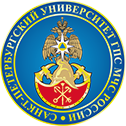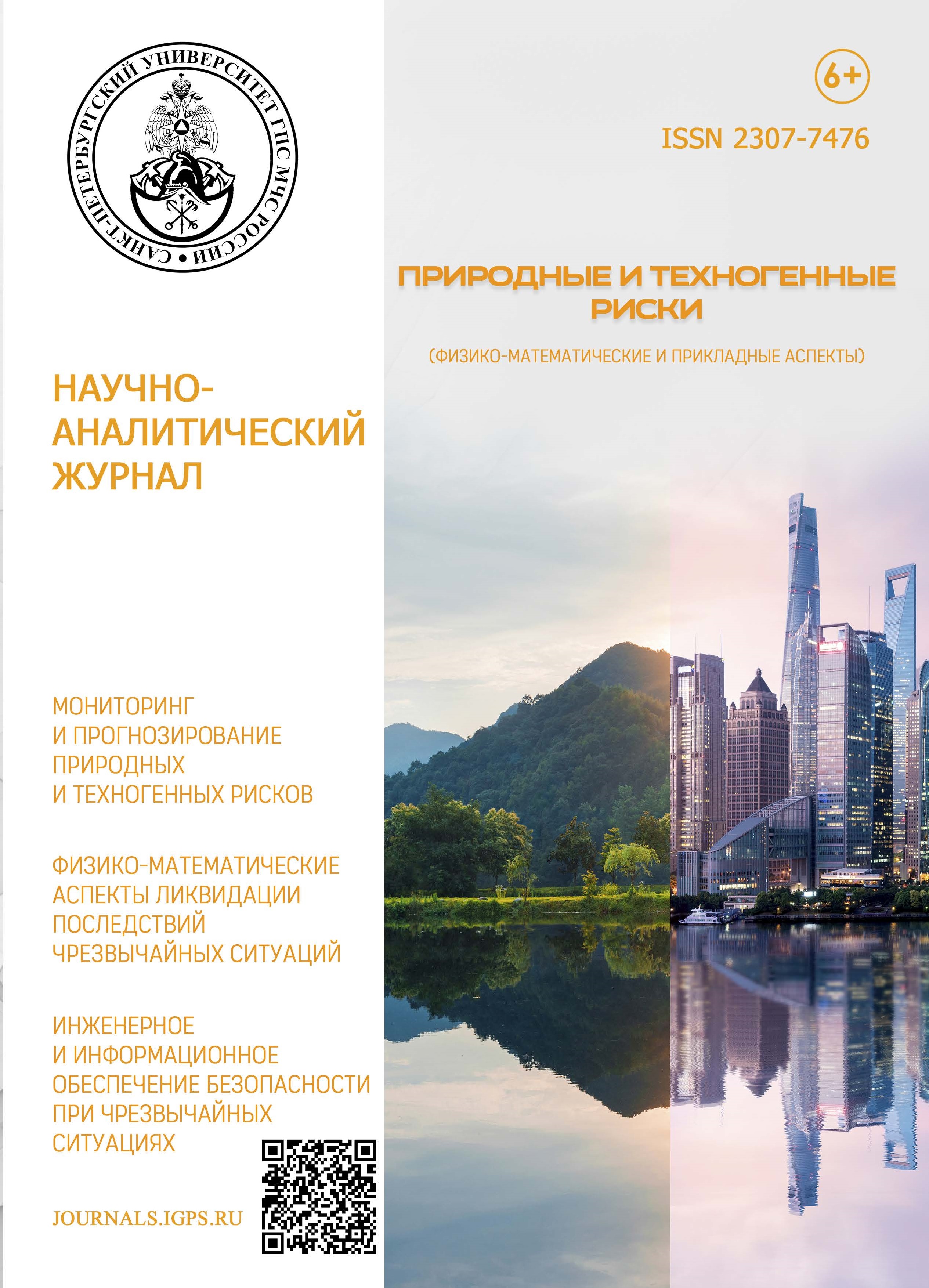Fires can have a direct or indirect impact on the durability and performance of a building. Even though many methods of fire prevention and detection are used today, fires in buildings are still considered a serious threat to residents. To identify the factors that most affect the occurrence of a fire, a comprehensive analysis of past fires in buildings was carried out. As factors influencing the occurrence of fires in buildings, the features of the building design, reconstruction methods, human behavior, fire safety rules, building codes and regulations, fire extinguishing means and methods, as well as the ideas of architects and engineers about fire safety were identified. The paper attempts to lay the foundation for a better understanding of past fires and the desire to create fire-resistant buildings in the future.
fire safety, buildings, fire protection methods, structural solutions, construction regulation, fire resistance, fire prevention
1. Pozhary i pozharnaya bezopasnost' v 2021 godu: statist. sb. / V.S. Goncharenko [i dr.]; pod obshch. red. S.V. Sokolova. M.: VNIIPO MCHS Rossii, 2022. 116 s.
2. Wong N., Jan W. Total building performance evaluation of academic institution in Singapore // Building and Environment. 2003. Vol. 38. № 1. P. 161–176.
3. Caia G., Ventimiglia F., Maass A. Container vs. dacha: The psychological effects of temporary housing characteristics on earthquake survivors // Journal of Environmental Psychology. 2010. Vol. 30. № 5. P. 60–66.
4. Xiuyu L., Hao Z., Qingming, Z. Factor analysis of high-rise building fires reasons and fire protection measures // Proceedia Engineering. 2012. Vol. 45. P. 643–648.
5. Rathnayake R., Sridarran P., Abeynayake M. Factors contributing to building fire incidents: A review // Proceedings of the International Conference on Industrial Engineering and Operations Management. Dubai, 2020.
6. Špatenková O., Stein A. Identifying factors of influence in the spatial distribution of domestic fires // International Journal of Geographical Information Science. 2010. T. 24. № 6. S. 841–858.
7. Subramaniam C. Human factors influencing fire safety measures // Disaster Prevention and Management: An International Journal. 2004. T. 13. № 2. S. 110–116.
8. Kodur Venkatesh, Puneet Kumar, Muhammad Masood Rafi. Fire hazard in buildings: review, assessment and strategies for improving fire safety // PSU Research Review. 2019.
9. Meacham Brian J., Michael Stromgren, Patrick van Hees. A holistic framework for development and assessment of risk-informed performance-based building regulation // Fire and materials. 2021. № 45.6. P. 757–771.
10. Meacham Brian J., IJsbrand J. van Straalen. A socio-technical system framework for risk-informed performance-based building regulation // Building research & information. 2018. № 46.4. P. 444–462.
11. Meacham B.J., van Straalen I.J., Ashe B. Roadmap for incorporating risk as a basis of performance objectives in building regulation // Safety Science. 2021. T. 141. DOI:https://doi.org/10.1016/j.ssci.2021.105337.
12. The need for hierarchies of acceptance criteria for probabilistic risk assessments in fire engineering / R. Van Coile [et al.] // Fire Technology. 2019. № 55 (4). P. 1111–1146. DOI:https://doi.org/10.1007/s10694-018-0746-7.
13. Cognitive Biases Within Decision Making During Fire Evacuations / M.J. Kinsey [et al.] // Fire Technol. 2019. № 55. P. 465–485. DOI:https://doi.org/10.1007/s10694-018-0708-0.
14. Overview of Fire Safety Management for Government Hospital Buildings / Siti Shahirah Suhaili [et al.] // Int. J. Adv. Res. Eng. Technol. 2020. № 11. P. 89–97.
15. Chow W.K., Zou G.W. Correlation equations on fire-induced air flow rates through doorway derived by large eddy simulation // Building and Environment. 2005. Vol. 40. № 7. P. 897–906.
16. Vul'f A.Yu. Analiz faktorov, vliyayushchih na chastotu vozniknoveniya pozharov v zdaniyah i sooruzheniyah // Bezopasnyj i komfortnyj gorod: sb. nauch. trydov po materialam vseros. nauch.-prakt. konf. Orel: Orlovskij gos. un-t im. I.S. Turgeneva, 2018. S. 87–90.
17. Madzhidov I.U., Kuldashev A.H., Ibragimov B.T. Analiz faktorov pozhara pri zemletryaseniyah // Vestnik Universiteta grazhdanskoj zashchity MCHS Belarusi. 2020. T. 4. № 3. S. 297–304.
18. O pozharnoj bezopasnosti: Feder. zakon ot 21 dek. 1994 g. № 69-FZ. Dostup iz sprav.-pravovoj sistemy «Konsul'tantPlyus».
19. Tekhnicheskij reglament o bezopasnosti zdanij i sooruzhenij: Feder. zakon ot 30 dek. 2009 g. № 384-FZ. Dostup iz sprav.-pravovoj sistemy «Konsul'tantPlyus».
20. O sostave razdelov proektnoj dokumentacii i trebovaniyah k ih soderzhaniyu: postanovlenie Pravitel'stva Ros. Federacii ot 16 fevr. 2008 g. № 87. Dostup iz sprav.-pravovoj sistemy «Konsul'tantPlyus».
21. Sustainable refurbishment for school buildings: a literature review / A. Le [et al.] // International Journal of Building Pathology and Adaptation. 2018.
22. Podgrushnyj A.V., Denisov A.N., Hong Ch.D. Sovremennye problemy tusheniya pozharov v zdaniyah povyshennoj etazhnosti i vysotnyh zdaniyah // Pozharovzryvobezopasnost'. 2007. № 16.6. S. 53–57.
23. Lazurenko A.A., Nikolaev A.N., Shmyreva M.B. Sovremennye problemy tusheniya pozharov v zdaniyah povyshennoj etazhnosti i vysotnyh zdaniyah // Problemy obespecheniya bezopasnosti pri likvidacii posledstvij chrezvychajnyh situacij. 2018. № 1. S. 813–816.
24. Dzhangiev R.N., Artem'ev N.S., Danilov A.M. Tushenie pozharov i spasanie lyudej v vysotnyh zdaniyah // Istoricheskij opyt, sovremennye problemy i perspektivy obrazovatel'noj i nauchnoj deyatel'nosti v oblasti pozharnoj bezopasnosti: sb. tezisov dokladov materialov mezhdunar. nauch.-prakt. konf. M.: Akad. GPS MCHS Rossii, 2018.
25. Vystavkina E.V. Pozharnaya opasnost' v zdaniyah: obzor, ocenka i taktiki uvelicheniya pozharnoj bezopasnosti // The Scientific Heritage. 2021. № 65-3. S. 59–65.
26. Kotkova E.A. Model' nejronnoj seti dlya prognozirovaniya predevakuacionnogo povedeniya lyudej pri pozhare // Nacional'naya bezopasnost' i strategicheskoe planirovanie. 2022. № 2 (38). S. 66–72. DOI:https://doi.org/10.37468/2307-1400-2022-2-66-72. EDN UBIKMZ.
27. Kotkova E.A. Analiz podhodov k issledovaniyu povedeniya lyudej pri evakuacii v ekstremal'nyh situaciyah // Zdorov'e – osnova chelovecheskogo potenciala: problemy i puti ih resheniya. 2021. T. 16. № 4. S. 1476–1479. EDN SKRFSM.
28. Kotkova E.A., Matveev A.V. Metodika intellektual'nogo prognozirovaniya effektivnosti upravleniya evakuaciej lyudej iz obshchestvennyh zdanij // Nauch.-analit. zhurn. «Vestnik S.-Peterb. un-ta GPS MCHS Rossii». 2021. № 4. S. 107–120. EDN PLARHX.





